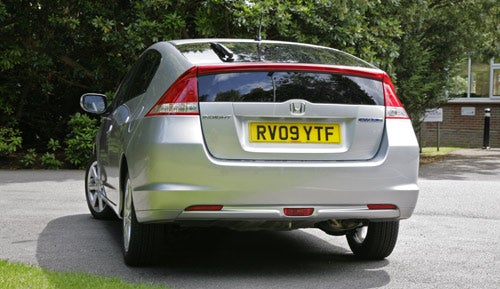Honda Insight 1.3 ES-T Hybrid Review
Honda Insight 1.3 ES-T Hybrid
Honda offers an alternative to the Toyota Prius for drivers who think hybrid technology will save the planet.
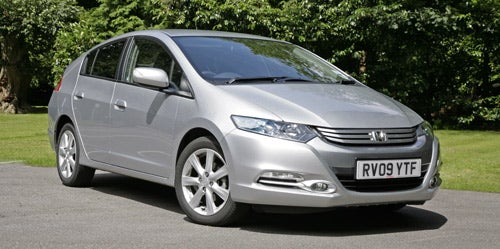
Verdict
Burning fossil fuels to get from A to B isn’t a sustainable long term transport strategy. Everybody knows that. Without getting bogged down in the debate about renewable power sources, the grid, nuclear fusion and all that jazz, the eventual solution looks very much like electric vehicles. Clearly, however, the journey from today’s petrol and diesel cars to that pure electric future isn’t going to happen overnight. It’ll take decades.
In the meantime, hybrid powertrains have appeared as a sort of stepping stone technology. Everywhere you look, car manufacturers are releasing new hybrid models. Even performance car manufacturers like Porsche, Ferrari and Lamborghini are getting in on the game. Indeed, Lexus has recently announced it will sell only hybrid versions of its GS, LS and RX models in the UK. Like ’em or loathe ’em, hybrids are set to become utterly commonplace.
That said, there’s something undeniably faddish about the current vogue for hybrid cars. Certainly their explosive popularity seems completely out of proportion with the typically modest gains in fuel efficiency on offer. A conventional diesel car is often every bit as good in terms of fuel consumption. Nevertheless, not only are hybrids rapidly becoming more efficient as manufacturers get to grips with a novel technology, they’re also getting cheaper.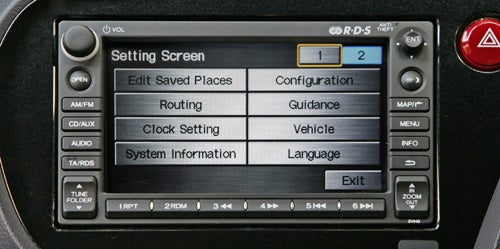
Honda, of course, has always been something of a powertrain specialist. Thanks to the world beating capabilities of its engines and the relative mediocrity of the cars they go into, some reckon Honda is an engine manufacturer first and a car manufacturer second.
Given that proud history of powertrain excellence, it’s no surprise that Honda has been one of the early movers in hybrid tech. In fact, the Insight moniker has been attached to production hybrids from Honda as far back as 1999. But where the early Insight was an odd looking compact coupe of limited practicality and appeal, this latest Insight is a much more family friendly five-door hatch straight out of the Toyota Prius mould.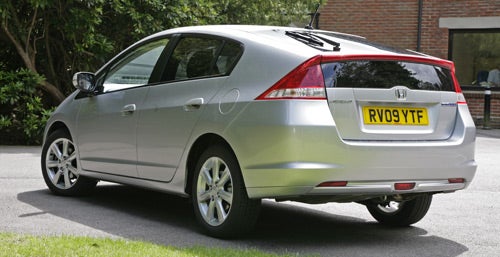
Actually, it’s not just similar proportions and a sweeping, aero-influenced profile that the new Insight shares with Toyota’s genre-defining hybrid. It also suffers from the same fundamental flaw. The combustion element of its part-electric powertrain is fueled by petrol rather than diesel. The explanation, of course, involves the fact that both the Prius and the Insight are really targeted at the US market. And for various reasons, Americans don’t really do diesel.
However, there is one area where the Insight diverges significantly from the Prius and that’s price. With a starting price in the UK of just £15,990, the Insight undercuts its key Japanese rival by over £2,000. OK, the Prius packs a significantly larger 1.8-litre engine to the Insight’s anemic sounding 1.3-litre lump. But when you look at the actual power outputs, there’s not much in it. 98bhp plays 87bhp. Anyway, let’s be honest, neither car is a B-road rocket. 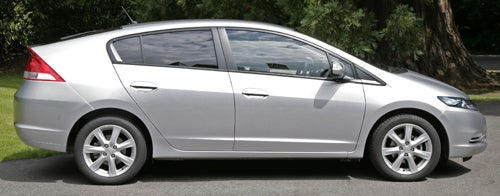
With all that in mind, our task is to discover whether the Insight’s in-car clobber is as forward looking as its spacey styling and fancy hybrid drivetrain. If Honda has managed to pull that off at the Insight’s modest price point, well, it surely has a winning package on its hands.
Step inside Honda’s cut-price Prius rival and you’ll discover a cabin suitably infused with a techno vibe. There’s no mistaking you’re on board something a little different thanks to the bold layout of the dash and the in-your-face instruments.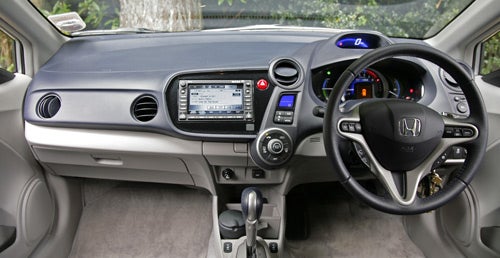
Highlights include a digital speedo that glows green when you are driving with optimal efficiency and ever darker blue if you give in to impatience and wring the little 1.3-litre motor out. For some, the overall aesthetic will be a little too reminiscent of a Japanese budget Hi-Fi systems jostling for attention on a superstore shelf. Whatever you think about it, subtle it ain’t.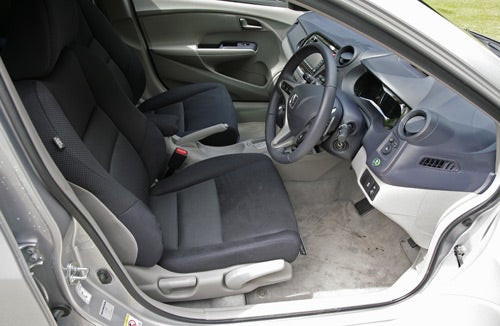
Nor does it give a particularly convincing impression of quality. For the most part, the cabin plastics are joyless, hard and unyielding to the touch. To achieve the competitive pricing, something surely had to give. Soft touch plastics were among the most obvious casualties.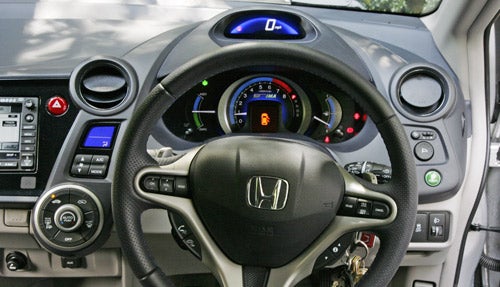
Still, what the Insight isn’t short on is features. There’s a full function infotainment and navigation system, the details of which we’ll come to shortly, a multi-function steering wheel incorporating cruise control, a CVT gearbox completely with the increasingly obligatory flappy-paddle-operated manual mode, all manner of stability control systems including electronic brake force distribution and of course that petrol-electric drivetrain. On paper, it’s a lot of car and technology for the money.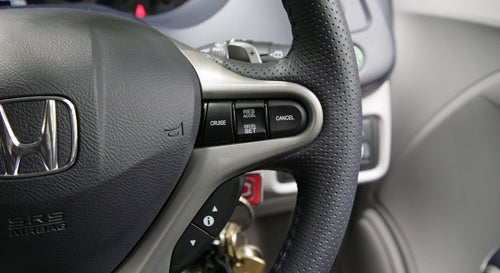
Thanks to its competitive pricing and hybrid gubbins alone, the Insight makes for an intriguing alternative to the usual hatchback suspects. If Honda has also given it a top notch infotainment system, this car will surely be a huge hit with the hip Generation X brigade.
At first glance, Honda appears to have done just that. Admittedly, the full infotainment rig as found in our test car only comes with the top spec ES-T model which is yours for £18,890, rather more than the £15,990 of the basic Insight. But then drawing customers into firing range with an attractive base price and then hosing out their wallets with pricey trim packages and options is not a tactic unique to Honda. It’s a routine motor industry ruse. 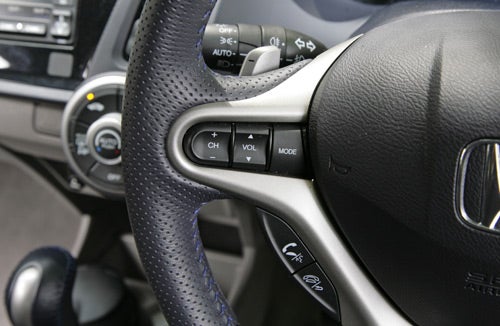
In any case, what you get is a fully integrated infotainment solution complete with navigation, hands-free telephony and an audio system that supports both the all-important Apple iPod and generic USB devices. The control interface takes the form of a central touch-screen LCD panel along with voice control for certain elements of the system.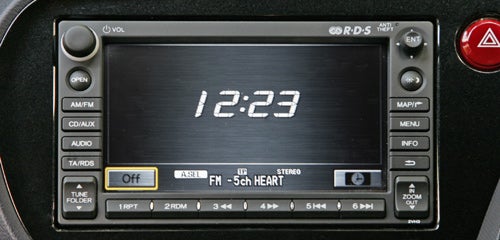
The core hardware actually slots into a standard double-DIN aperture in the centre of the dash. It’s not clear whether upgrades are possible. However, given the extent to which the system integrates with the broader functionality of the car, replacing it with an aftermarket double-DIN alternative would probably be ill advised.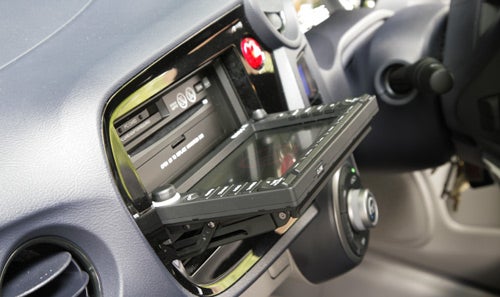
More to the point, replacing it would not solve its greatest ergonomic weakness. Fitted flat and flush in the centre of the dash, the view from the driver’s seat is at a pretty oblique angle. That makes for irritating and distracting reflections, so you often find yourself leaning over slightly for a better view. That’s a pretty clear usability fail in our book.
While we’re talking about the system as a whole, it’s also worth noting that the voice recognition system is pretty awful. Apart from making a reasonable fist of saving you from manually drilling in phone numbers via the touch-screen, it’s inaccurate to the point of near futility. Forget navigating your way around the interface via voice control, it’s simply not up to the job.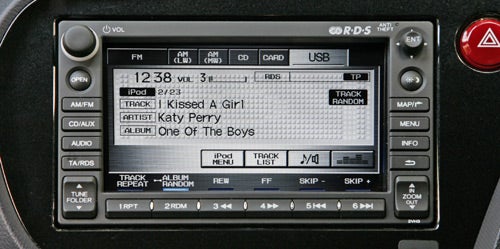
Finally, further demerits are due for the slightly shoddy overall execution of the infotainment user interface. There’s no overarching logic or hierarchy to the menu system, just a rather messy and confusing jumble of shortcut keys the function of which isn’t always clear. The main “Menu” button, for instance, only gives access to the options menu for the sat-nav system. Likewise, the phone functionality is buried inexplicably in the “Info” section.
Probably the strongest part of the Insight’s infotainment proposition is the satellite navigation system. Granted, it can’t compete with the best aftermarket systems for features and connectivity. Traffic data is limited to the relatively rudimentary RDS-TMC system and there’s no Internet access at all. Consequently, the static Points of Interest database is of only moderate utility. But overall, the nav system remains one of the better factory-fitted solutions currently available.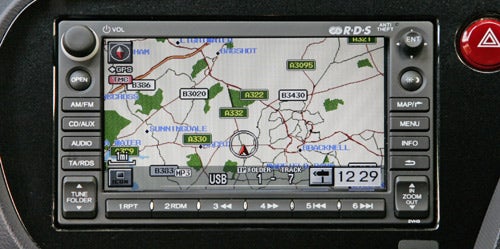
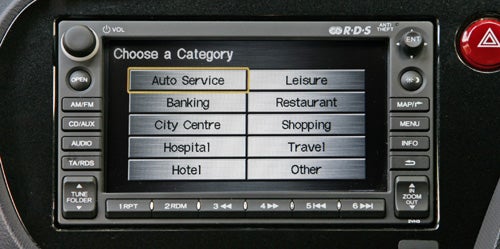
For starters, it supports full seven-digit postcode input, an inexplicably rare but nevertheless extremely welcome feature among factory-fitted systems. It really does take a lot of the pain and phaff out of inputting addresses.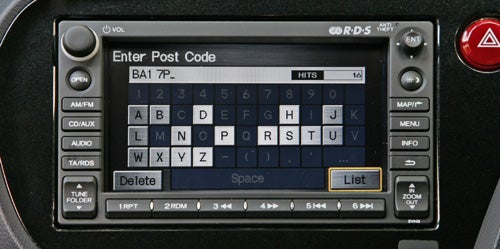
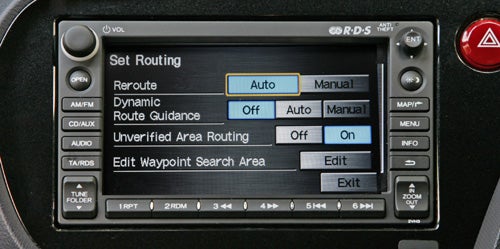
Another strong point is the mapping and guidance itself. As well as benefiting from well paced guidance instructions, Honda has done a really solid job on the graphics. The maps are clear, crisp and easy to read. The best bit is the secondary map that zooms in as you near a junction, roundabout or other potentially confusing road layout. It does a great job of making it very clear both where you are on the road and where you need to go to keep to the desired route. Combined with the clear voice guidance, this is one system that virtually never leaves you in doubt regarding the next turn or the correct exit to take.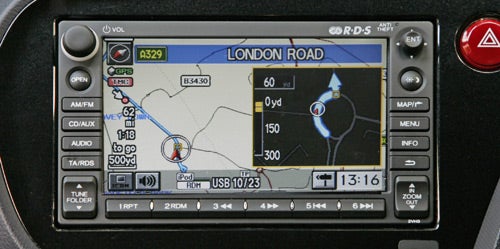
Except, that is, when you happen to be cranking out some tunes. While the system does automatically reduce the volume of the entertainment music when delivering audible guidance notes, it doesn’t lower it enough for comfort and clarity. A minor glitch, perhaps, but a real nuisance in practice.
Another reasonably successful aspect of the Insight’s infotainment platform is media playback. Courtesy of a USB socket in the central armrest, support for the Apple iPod / iPhone along with generic mass storage devices is provided, the latter taking in MP3 and WMA file formats. In both cases, the system works pretty well, detecting newly connected devices without a fuss and delivering fairly intuitive access to both overall libraries, and in the case of the iPod, playlists.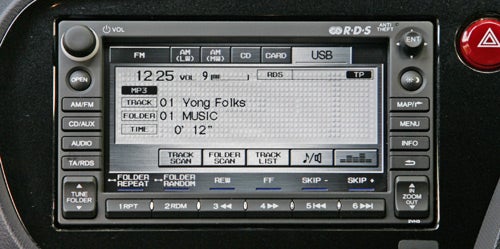
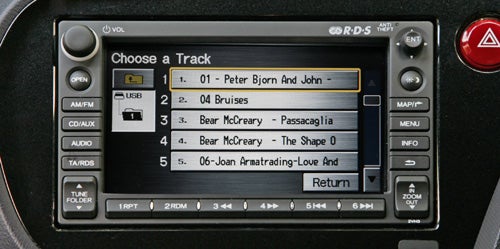
Incidentally, reports suggest the Insight also supports some though not all iPhone-based Internet radio services over USB, though this isn’t a feature we tested. For sure, Spotify in your Insight could be an intriguing solution.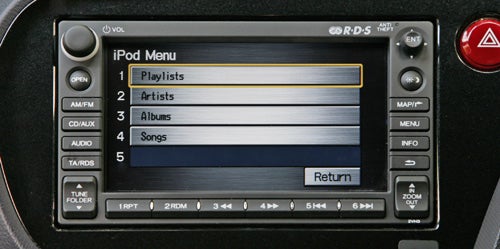
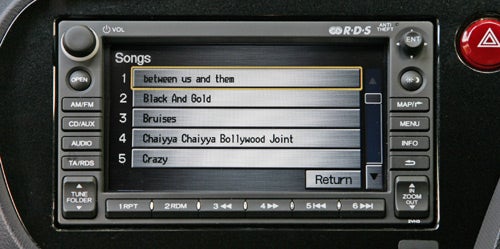
Of course, what the Insight does lack is local storage of any kind. Exactly how much of a shortcoming that is will depend on your personal preferences. In the long run, however, local storage of music files is arguably part of a dying usage model. Being able to plug in a personal digital device or sync wirelessly to some kind of cloud-based media repository is where it’s at.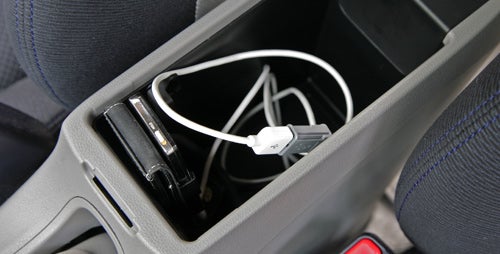
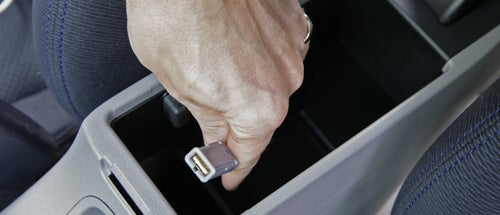
For the record, the Honda has also provided a fall back in the form of a 3.5mm aux-in socket should your portable media device prove incompatible with the USB port. As for the system’s optical drive, a few years ago it might have seemed disappointing to find that it only supports redbook audio CDs. But flash memory devices are now so cheap and convenient, the home-burned CD as storage device is almost history.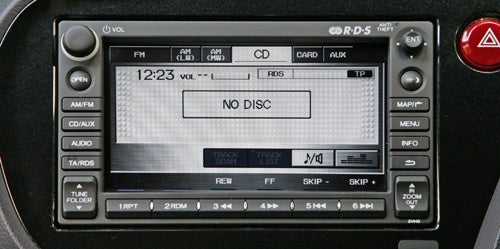
Given the absence of digital radio tuning or video playback of any kind, the final part of the entertainment package is a conventional analogue radio. Unfortunately, it’s easily the weakest part. The problem involves the radio’s inability to automatically scan the air waves and present the user with a list of currently available stations. Sure, you can execute a scan at your leisure, but it’s so much more seamless and user friendly if the system is constantly updating the station list according to what’s actually available.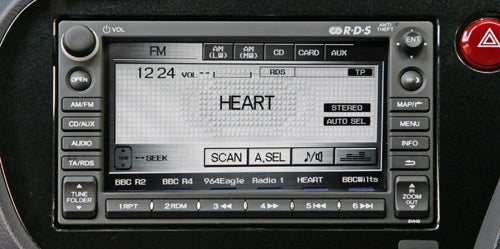
It’s also does a very poor job of tuning into the strongest available signal for those stations that operate on multiple frequencies. Moreover, it’s just plain fiddly to use and reflects the fact that the infotainment system’s overall feel is overly complex and clunky where it should be clear and simple. Put another way, the Insight’s infotainment system is much more Sony SonicStage than it is Apple iTunes and all the worse for it.
Given the increasingly piffling cost of Bluetooth kit, it ought to be standard fit on all but the most rudimentary econo-cars. Sadly, the car industry is currently addicted to ripping consumers off with overpriced options list items. If Bluetooth isn’t standard on the base model, it rarely comes cheaply. It’s therefore unsurprising if disappointing to find that Insight buyers have to pay thousands more than the Insight’s £15,990 base price to secure an example with hands-free telephony support. 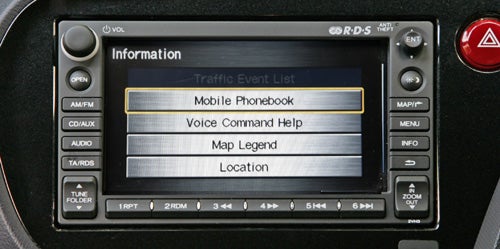
Anyway, if you do plump for the top end ES-T model, what exactly do you get in terms of Bluetooth telephony? The first thing you’ll notice is the clunky set-up routine. For reasons that are far from clear, Bluetooth syncing is achieved via voice command only. The central touch-screen is not an option for setup. In practice, phone syncing is a pretty rare occurrence, but it’s hard to imagine why Honda thought forcing people to battle with a slightly recalcitrant voice recognition system rather than at least offering the option to punch in the required data via the touch-screen was a good idea.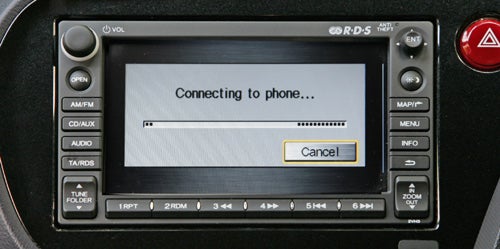
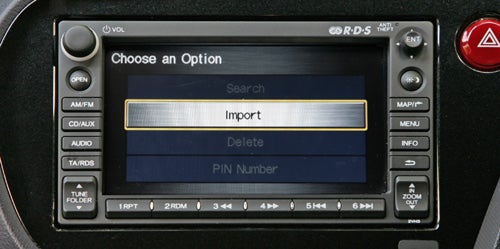
However, the voice control aside, the syncing process is actually pretty rapid and fault free. In fact, the Insight was the first car we’ve test to successfully not only sync with but also automatically pull a full list of contacts off our HTC Touch HD test handset. Windows Mobile phones tend to get the better of most systems. The syncing process with a Motorola mobile was similarly effective.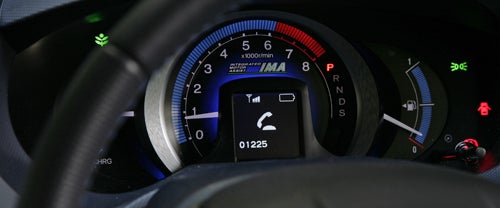
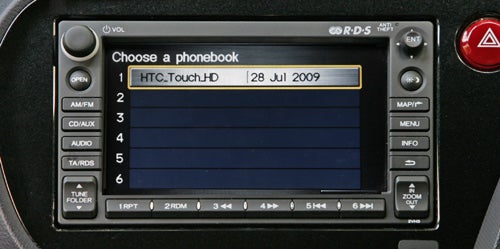
Once you’re up and running, it all works pretty well. The voice recognition for number dialing is accurate enough and there’s a programmable 50-entry list of voice-controlled contacts. That said, it’s obviously not as sophisticated as systems that have a stab at automatically recognising imported contacts using a phonetic database.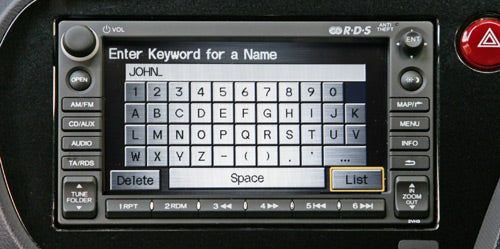
TR’s remit for car tests is necessarily pretty narrow. Infotainment is our main concern. However, given that the Insight trades extensively on its high-efficiency credentials, there would be a very large elephant left pacing the room if we did not at least touch upon our test car’s fuel economy.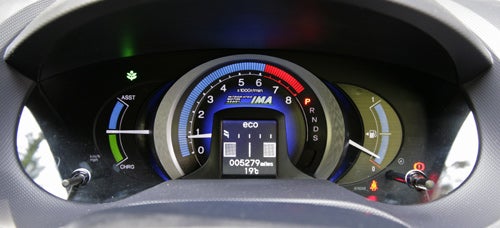
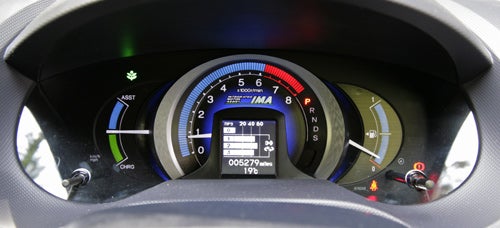
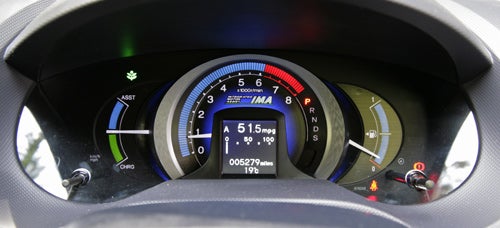
During our time with the Insight we did our best to minimise throttle and brake inputs and therefore fuel consumption. Over the better part of a week of extremely careful A-road driving we achieved 52mpg. A solid result but hardly spectacular given the sheer weight of supposedly fuel-saving technology the Insight packs including an electric motor, brake energy regeneration and a continuously-variable gearbox.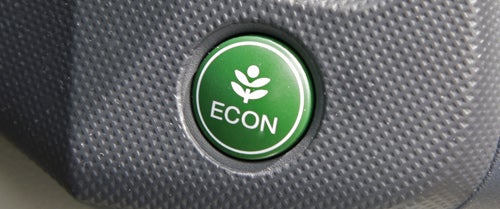
We also found the large green “ECON” button on the dash had little effect on either the subjective driving or the reported fuel economy. That despite the fact that Honda claims it, “optimises engine management, transmission and climate control system settings for maximum fuel economy and also engages the auto-idle function sooner and increases battery charging during regenerative braking.” ECON on or off, the Insight is a relatively glacial performer.
Without question, the Insight is an interesting package and at a starting price under £16,000 looks like conspicuously good value next to the conceptually extremely similar Toyota Prius. It also makes for an intriguing alternative to a conventional five-door hatchback, even if the steeply sloping rear roof line does somewhat compromise both practicality and rearward visibility.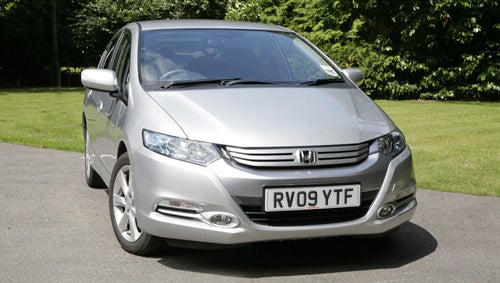
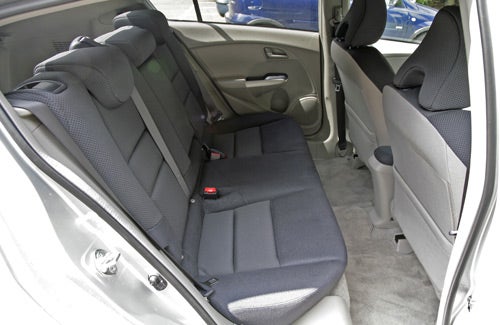
As for the Insight’s in-car technology, once you get past the funky instrument lighting and digital readouts, you’re left with a decent but hardly remarkable infotainment solution that does the basics but with little flair or innovation. The sat-nav deserves plaudits for its clear and accurate guidance as well as support for full seven-digit postcode. In terms of support for iPods and USB storage devices, the Insight also has most of the bases covered.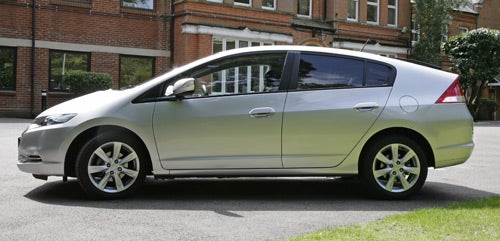
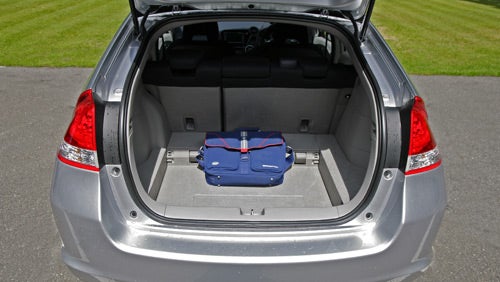
It’s a bit of a shame, therefore, that buyers are forced to stretch to £18,890 to secure an Insight model with all the right goodies in terms of in-car kit, namely satellite navigation, Bluetooth telephony and a USB port. Because at nearly £20,000 the Insight finds itself in more rarefied territory. And that’s when the low rent interior plastics and weedy performance stop looking like quirks and start feeling like significant shortcomings.